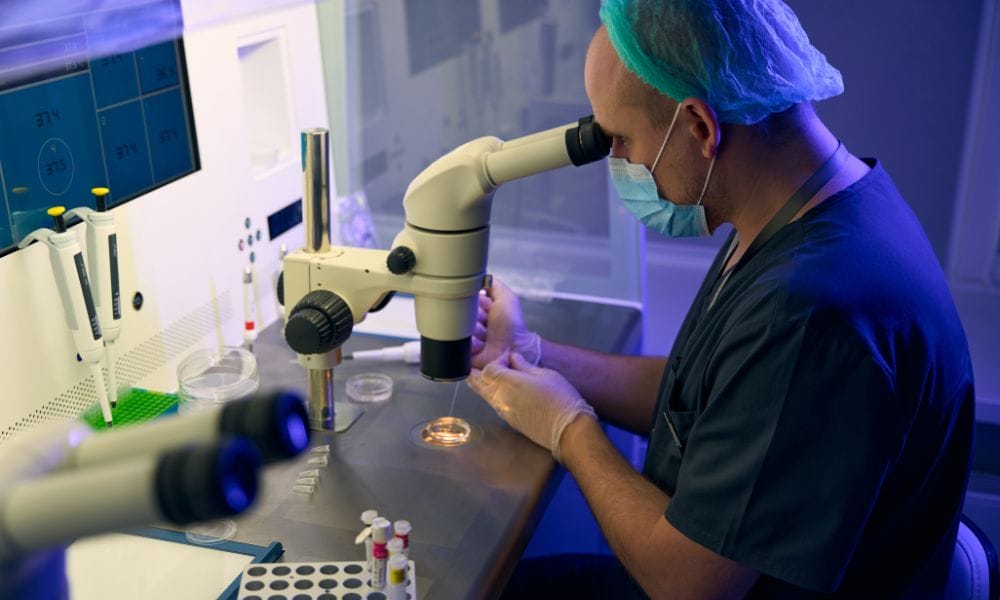Biopsia de Ganglios Linfáticos
Procedimiento médico en el que se extrae tejido de un ganglio linfático para su posterior análisis.
Diagnóstico avanzado y preciso para su salud
Esta prueba se realiza para diagnosticar enfermedades como el cáncer y determinar si las células cancerosas se han diseminado a través del sistema linfático. Sus resultados representan un paso importante para el diagnóstico y la elección del tratamiento adecuado para el paciente.
La biopsia de ganglios linfáticos es altamente efectiva, especialmente para determinar la extensión y estadificación de ciertos tipos de cáncer.
La experiencia de dolor durante una biopsia de ganglios linfáticos puede variar según la sensibilidad individual y el tipo de biopsia realizada.


El Procedimiento
La biopsia de ganglios linfáticos proporciona información crucial sobre la progresión de la enfermedad y la posible diseminación a otras partes del cuerpo, lo que es fundamental para la toma de decisiones clínicas.

Los Resultados
El resultado de una biopsia de ganglios linfáticos puede ser positivo si se identifican células cancerosas; o negativo, sugiriendo la ausencia de células malignas en los ganglios analizados.

El Especialista
Nuestros expertos en patología se dedicarán de manera minuciosa al análisis de la muestra, con el objetivo de ofrecer un resultado altamente confiable.
¿Cómo se Realiza una Biopsia de Ganglios Linfáticos?
La biopsia de ganglios linfáticos se puede realizar de diferentes maneras. Las opciones incluyen: la biopsia con aguja fina, la biopsia con aguja gruesa, la biopsia abierta (quirúrgica) y la biopsia de ganglio linfático centinela; dependiendo de la ubicación y el propósito de la biopsia. Cada método tiene sus propias técnicas y consideraciones específicas, y se selecciona según las necesidades diagnósticas del paciente.
Biopsia con Aguja Fina
Se utiliza una aguja delgada para extraer células o tejido de un ganglio linfático.
Biopsia con Aguja Gruesa
Aunque es similar a la biopsia con aguja fina, en este procedimiento se emplea una aguja más gruesa para obtener una muestra más grande de tejido.
Biopsia Abierta (Quirúrgica)
Se realiza una incisión para extraer uno o más ganglios linfáticos.
Biopsia de Ganglio Linfático Centinela
Se identifica y se extrae el ganglio linfático «centinela» que está más cerca del tumor.
¿Cómo prepararse para una biopsia de ganglios linfáticos?
Antes de una biopsia de ganglios linfáticos, es importante seguir las instrucciones del médico, las cuales pueden comprender desde restricciones dietéticas hasta medicamentosas, días antes de la prueba.
También es crucial informar al médico sobre cualquier alergia o afección médica, con la finalidad de evitar complicaciones.

Beneficios
Los beneficios de la biopsia de ganglios linfáticos incluyen:
- Mayor precisión en el diagnóstico de enfermedades como el cáncer.
- Identificación de la etapa actual de la enfermedad.
- Planificación del tratamiento adecuado según los resultados obtenidos.
Resultados de la biopsia de ganglio cervical
Los resultados de una biopsia de ganglios linfáticos pueden variar. En el caso de resultar negativo, quiere decir que en la muestra no se observaron alteraciones patológicas; por lo tanto, hay ausencia de células cancerosas. Cuando la biopsia es positiva, se confirma la presencia de células cancerosas en los ganglios linfáticos.

Preguntas frecuentes
La biopsia de ganglios linfáticos se puede realizar con anestesia local o general, dependiendo del tipo de biopsia y la preferencia del paciente.
El tiempo de recuperación tras la biopsia de ganglios linfáticos puede variar, pero generalmente se puede esperar una recuperación completa en unas pocas semanas.
Los efectos secundarios de una biopsia de ganglios linfáticos pueden incluir:
- Dolor en el lugar de la biopsia.
- Hinchazón.
- Moretones.
- Riesgos asociados con la anestesia y/o el procedimiento.